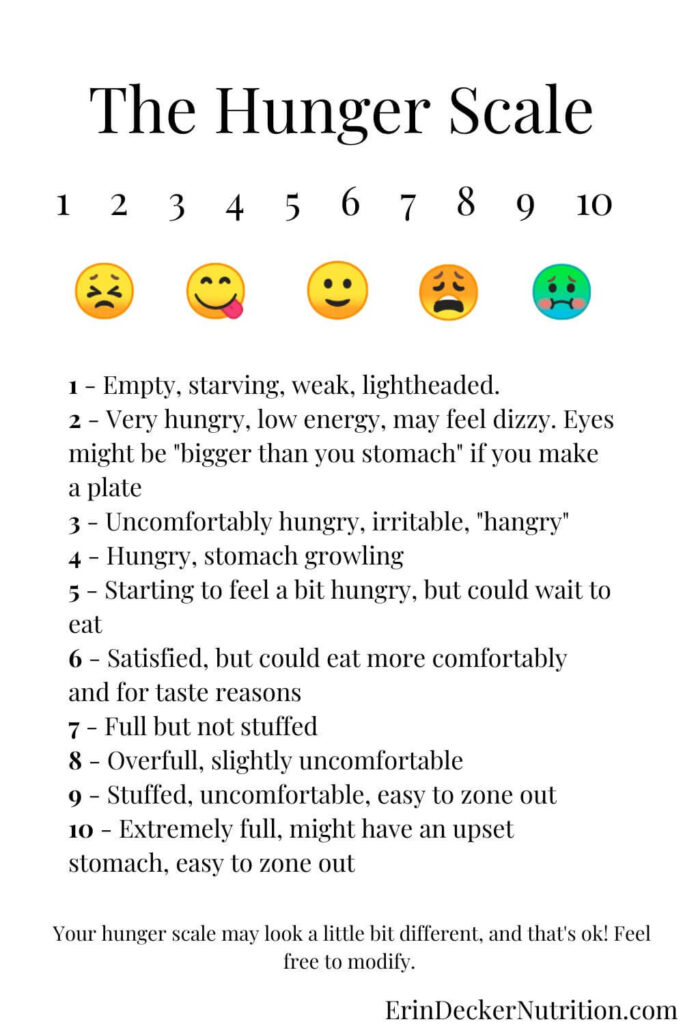Binge eating disorder may exist on its own or in the context of anorexia or bulimia nervosa. Binge eating almost always starts with restriction. This article will outline how to start recovering from binge eating disorder.
As always, consult with your doctor if you have any concerns around your eating and health behaviors.
Table of Contents
What is binge eating disorder?
Binge eating disorder (BED) is an eating disorder characterized by recurrent episodes of eating a large amount of food in a short amount of time. It is accompanied by feelings of guilt and shame. BED is diagnosed by a mental health professional.
You do not need a formal medical diagnosis in order to seek help for binge eating. However, it may be helpful to start with your primary care provider if you need a referral and/or medical diagnosis in order to use your insurance.
Risks of binge eating disorder
Believe it or not, there are not a lot of risks to binge eating! That being said, individuals with binge eating disorder are often in larger bodies. As a result, they have many of the same risk factors for chronic disease as those who are clinically “obese”. Those with BED often experience weight stigma and have a history of weight cycling, which further increases their risk for chronic disease.
Those with BED can suffer from psychological disturbances such as body dissatisfaction, poor self-esteem, anxiety/depression, and co-occurring restrictive eating disorders such as anorexia. Research shows that binge eating is often a direct result of dieting or restricting food intake.
BED is not associated with many other physical health problems beyond digestive concerns resulting from the large volume of food consumed: stomach pain, cramping, and bowel changes. While stomach dilation and rupture can happen, it is very rare.
How to start recovering from binge eating disorder
The first step in recovering from binge eating disorder is to embrace the mantra: “progress over perfection!”
There is no right way to recover and it will look different for everyone. I have outlined below a reasonable structure, but in my practice this always varies depending on where my clients are able and willing to start.
Build your support team
Your support team for recovering from binge eating disorder will often include a dietitian, therapist, medical provider, and a trusted support person or people.
Engage in self-monitoring
Self-monitoring is the act of bringing awareness to your thoughts, feelings, and behaviors. For binge eating disorder, this often involves keeping a food journal.
For many of my clients, there is shame involved in writing down exactly what you ate and binged on. This is understandable. Diet culture makes you feel ashamed and morally inferior for eating certain foods.
If this is true for you, practice being what the authors of Intuitive Eating call a “food anthropologist”. A food anthropologist is a nonjudgmental, curious observer of your eating behaviors. She asks the who, what, where, when, and why of your behaviors. For instance:
- Who was with you before or during your binge?
- What was going on?
- Where were you?
- When did the binge happen?
- Why might the binge have happened?
The food anthropologist asks these questions with absolutely no judgment. She is full of matter-of-fact compassion and understanding.
I like to recommend the app Rise Up and Recover for this purpose.
Get on a meal plan
The meal plan is key. Binge eating is often triggered by restriction. By following an adequate meal plan, you can be sure that your binge isn’t triggered by hunger. It is simply a process of elimination. Anytime you find yourself binge eating, always come back to the meal plan as soon as possible. Download my free recovery meal plan for binge eating disorder!
While everyone’s nutrition needs vary, following what’s known as the Rule of Threes is a “good enough” approach to get started for most people.
The Rules of Threes
The following guidelines are adapted from Nutrition Counseling in the Treatment of Eating Disorders by Marcia Herrin and Maria Larkin.
- Three meals
- Three snacks
- No longer than three hours apart
- Aim for at least three food groups per meal*
This type of eating pattern mimics a “normal” appetite and is meant to help you connect with your own hunger and fullness cues.
*I added this bullet to give my clients a bit more direction
Build familiarity with hunger and fullness cues
As you start following a meal plan, you may not have obvious hunger and fullness cues yet. This is normal. Over time, you may start to notice these cues making their way back to you.
As you are following your meal plan and completing your self-monitoring, start making a note of your hunger level before, during, and/or after some of your meals. Use the hunger scale below as a guide.

Identify triggers for binge eating
While it is widely accepted among eating disorder professionals that restriction triggers binge eating, other triggers do exist.
As you are getting comfortable with your meal plan and your hunger and fullness cues, you can bring awareness to other triggers for binge eating. This is where that food anthropologist becomes so helpful. Look for patterns in your food journal for situations or thoughts that precede your binges.

Find additional coping skills
“Normal” eating encompasses emotional eating. Emotional eating is nothing to be ashamed of. I tell my clients that emotional eating is only a problem if it is a problem for you and it is negatively affecting your life.
If you are reading this, I assume that you are looking for ways to overcome emotional or binge eating. This means finding other coping skills for distress. See below for some examples!
Alternatives to Binge Eating
| Emotional Trigger for Binge Eating | Alternative Activities |
| Stress, anxiety | Deep breathing, take a walk, journal, do yoga, light a candle, take a bath |
| Loneliness | Call a family/friend, volunteer, visit a coffee shop |
| Boredom | Read a book, do a puzzle, learn a new craft or skill, play a video game |
| Restlessness | Go for a walk, go (window) shopping, clean your house |

Get support for ups and downs
Recovering from binge eating disorder is not linear. There will be ups and downs. Reach out to a dietitian, therapist, or trusted friend. You may even find good support in online or in-person communities.
Try to look at your lapses with a sense of humor. There are very few risks to binge eating. Think to yourself, “wow! Here I go again. I haven’t seen this behavior in some time. I wonder what is going on?”
Overcoming binge eating can be a beautiful journey of getting to know yourself even better.
Looking for more tips? Join my mailing list today!
